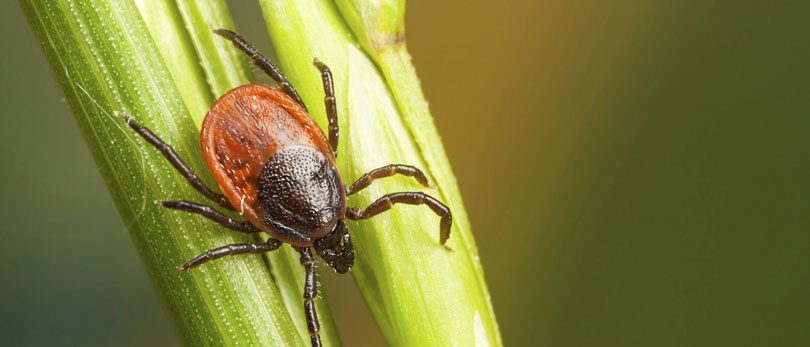Be on the lookout for ticks — while they are around throughout the year, extra caution should be taken from April to September. These tiny arachnids can latch onto your skin, burrowing in to get a meal of blood. Blacklegged ticks — a species found widely in the Southern Tier — can spread Lyme disease. Kim McHenry, FNP-C, family nurse practitioner at UHS Primary Care Owego, shares this advice:
- Avoid wooded areas with high grass and try to walk on trails or pavement.
- Repel ticks with an insect repellent containing DEET (at least 20–30 percent) on exposed skin and clothing.
- Shower as soon as you come in from outdoors.
- Do a full-body check using a mirror or with help from a family member. Pay close attention to hair, under the arms, in and around the ears, in the belly button, behind the knees and between the legs.
- Place clothing in the dryer on high heat to kill any remaining ticks.
- Check your pets, especially if you allow them to sleep in your bed.
If you find a tick, the best way to remove it is using fine-tipped tweezers, grasping the tick as close to the skin’s surface as possible. Pull straight upward with even pressure. Do not twist. If parts remain in the skin and you cannot remove them easily, leave them in place and the body will eventually expel the remnants and heal. After removing the tick, clean the area well with rubbing alcohol or with soap and water.
READ MORE
GET TICKED OFF
The Centers for Disease Control is a great resource for information about dealing with ticks and how Lyme disease can be treated.







